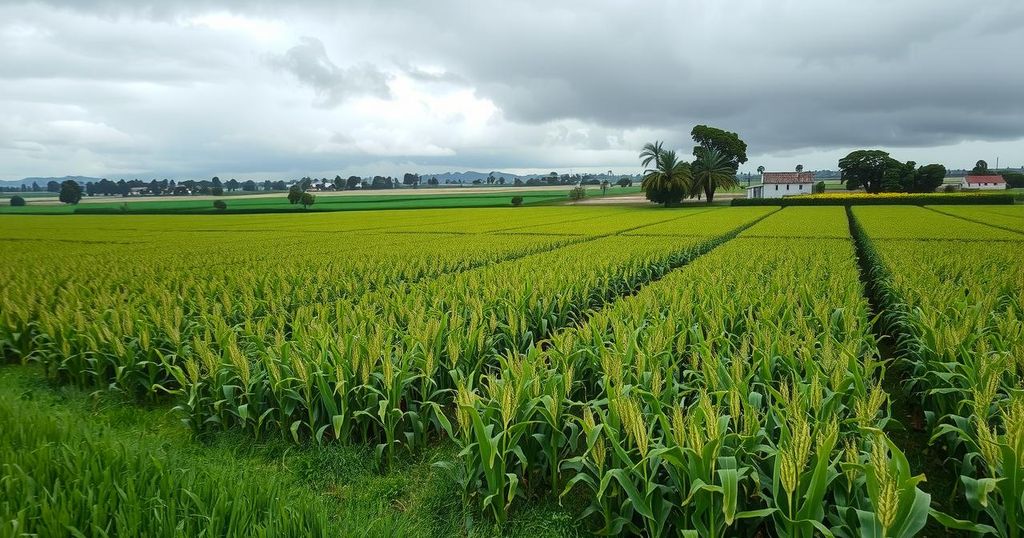Brazil’s Second Corn Crop Facing Delays Due to Rainfall

- Brazil’s second corn crop harvest is delayed due to rain.
- Frosts had little impact on the overall corn crop quality.
- The domestic market faces liquidity pressures with high corn volumes incoming.
- Export flows are weak and need to improve to stabilize prices.
- Ethanol blend increase won’t boost current corn demand.
Current Conditions Impacting Brazil’s Second Corn Crop
The harvest of Brazil’s second corn crop is facing some challenges right now. Slow conditions are largely caused by persistent rain and humidity, unusual for this time of year. While the frosts from last week did not really affect the crops in a major way, their impact on some later regional harvests cannot be underestimated. Here, quality issues are arising as some crops may have been damaged; it is clear that warehouses in the impacted areas will have their hands full assessing the incoming grains. Another angle to consider is exports, which have surprisingly remained stable yet slow for July. This steadiness could keep pressure on liquidity levels in Brazil’s domestic market as businesses navigate these conditions.
Progress of Harvest by Region
As for the progress of the second crop harvest, it’s noticeably picking up in regions like Mato Grosso and Matopiba. The initial harvests are steadily fulfilling both contract obligations and local demand, a good sign amid some challenges. In Goiás, rain last week means harvests are expected to push forward. Meanwhile, in Minas Gerais and São Paulo, farmers are kicking off some sorghum harvests, though the larger corn harvest is likely to start its main run around mid-July as conditions are anticipated to improve. Regional variations, however, are evident; sections of Paraná, Paraguay, and Mato Grosso do Sul have been bogged down by relentless rain, which is extending harvest times and complicating the conditions of certain hybrids.
Looking Forward to Domestic and Export Markets
Looking ahead, the key question is how to successfully manage the influx of approximately 100 million tons of corn expected in the market in the next few weeks. Another 10 to 12 million tons are to arrive from Matopiba, intensifying what already seems like a crowded marketplace. While the domestic demand remains favorable, it won’t be enough to absorb such high volumes unless there is a significant boost in export flow. The figures for June suggest that we are not on track for that; only 650,000 tons were shipped. A scheduled 1.6 million tons for July contrasts harshly with last July’s figures of 3.6 million tons. Port operations in places like São Luís, Santos, and Paranaguá need to ramp up to accommodate this influx, but shipping of soybeans and sugar remains an obstacle.
Implications of Pricing and Future Actions
As we navigate through July, the lower shipments might lead to heightened selling pressures in the domestic market. Consequently, this may create an increased concentration of shipments later in the semester. Pricing will become a central issue to monitor, particularly as prices at the CBOT dropped last week, hitting $4.00 per bushel. With the Brazilian real hovering below BRL 5.50, corn prices at ports fell in the range of BRL 63 to 66 per bag, indicating tight liquidity. Premiums are lacking, which usually compensates for low prices and currency effects. The market awaits future liquidity as it builds domestic stocks, with the hope that more robust exports will arrive soon to ignite competition with local demand.
Ethanol Regulations and Short-Term Impacts
The approval of increasing the ethanol blend in gasoline to 30% could offer long-term benefits to corn producers but will not change current demand this year. Industry capacities are already set to maximum processing limits, thus needing further infrastructure investment before growth can occur in corn consumption. While this change supports new projects scheduled for the 2026 to 2030 period, it does not alleviate the short-term issues that come with the current harvest scenario. For now, the anticipated demand in corn should not be significantly affected, though the ethanol industry is expected to benefit more directly from this policy change than corn producers will in the immediate future.
In summary, the second corn crop harvest in Brazil faces challenges due to slow weather conditions and frosts. While quality issues are likely to arise, the market is looking at high volumes entering in the coming weeks. Attention will need to be paid to export flows and domestic pricing strategies as they will significantly impact overall market dynamics.







